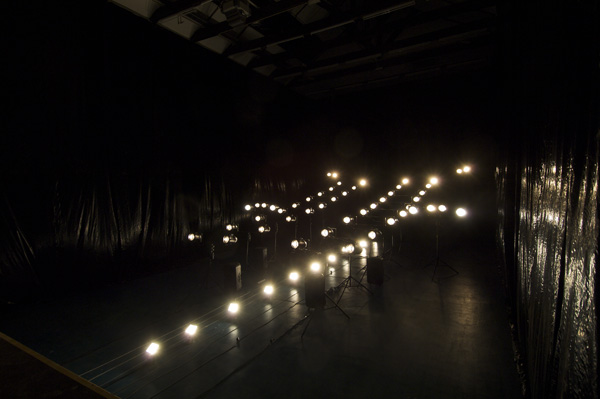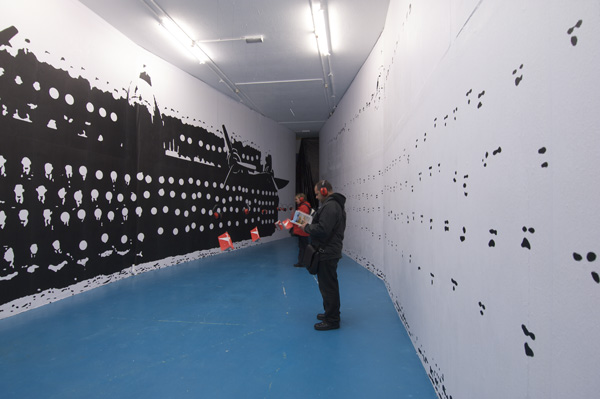With or On Idan Hayosh
Idan Hayosh





When I taught at the art college in Groningen I was fortunate to have Kees Wiersma in my class. Kees painted acrobatic football scenes in a kind of late El Greco style: on a dark reddish-black ground with rapid-flowing, loose strokes in metallic colours. All his paintings were symmetrical. One day, when we were talking about his paintings, in a serious tone, Kees suddenly said: “Gijs, the importance of symmetry is severely underestimated”. I took his observation to heart; I gradually began to work more symmetrically myself, and to notice this in the work of other artists.
Symmetry is one of the most fundamental aspects of the light and sound installations of Idan Hayosh: lamps, ventilators on tripods, speakers and cables are set up in a strictly symmetrical order. Symmetry makes a direct appeal to our physiology: it has a physical effect on us. Symmetry is the counterpoint to composition. In a composition, volumes, shapes, colours or concepts are harmoniously set out in a ground or space facing the viewer. Even the most obvious compositional chaos acts as a mirror or window: we relate to it freely; we reflect upon it. In the reassuring dynamic of a composition, our eyes can wander endlessly – it is a parallel universe set out before us.
A symmetrical image is always an organism or machine which is constantly coming towards us (unless a substantial part of the centre is empty, in which case it can become a kind of ‘spy hole’). Half a symmetrical image is, of course, always a composition in its own right, although its knack of calming the viewer lies in the symmetry. A viewer is soon disconcerted when a mirror-image dissects our body, dividing us into two conflicting halves.
The ill-intentioned could brush off Hayosh’s work by labelling it “artistic research”, where the purpose is to deconstruct the effect of an artwork. Luckily, though, he charges his installations with an unprecedented amount of voltage, amperes, watts, lumens and decibels connected to the mains by thick cables running through an extra secure fuse box, triggering a new experience that compels the viewer’s involvement. Just as J.M.W. Turner had himself bound to the prow of a ship to experience storms at first hand, Hayosh’s installations grant us a chance – if just for a moment - to feel what it’s like to be an airplane.
Gijs Frieling